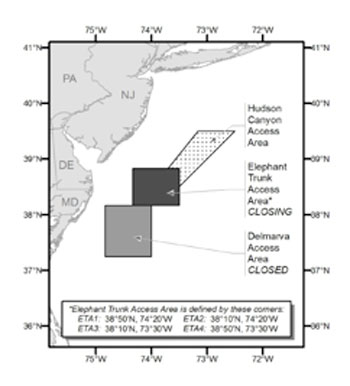Atlantic Sea Scallop Permit Holders

Ruth Brown died 61 years before Belfast and it's cemetery were officially established. The moving of her grave is a possibility or Ruth may have been resting in peace when the cemetery was established around her. The markings, the skull, angel wings and the stone's text are traditions dating back to the earliest colonial gravestones. The presence of the stone in the area indicates an early colonial settlement. At the head of a great bay and at the mouth of a great river, it was a likely place to settle for colonists and native Americans before them. Tom Seymour photo.
We have closed the Elephant Trunk Area (ETA) to all scallop fishing for 180 days through emergency action, from December 12, 2012, through June 10, 2013. Framework 24 and following actions will likely keep this area closed for up to another 2 years, once this action has xpired. This action was requested by the New England Fishery Management Council with the support of the scallop industry. The 2012 scallop survey saw the third highest observed abundance of small scallops in the ETA since 1979. These scallops need to be protected to allow them to grow for their future harvest. The success of the entire scallop area rotation program depends on timely openings and closing of access areas in order to protect scallop recruitment and optimize yield.
Frequently Asked Questions
What will change?
Vessels will bnot be2 allowe to fish on days-at-sea or IFQ trips inside the ETA through June 10, 2013.
Why has the ETA been closed? The ETA was closed to protect an abundance of small scallops in the area so they can eventually be harvested when they have reached a marketable size.
When will the ETA open? Framework 24 and following actions will likely keep this area closd for up to 2 years to allow these small scallops to grow. Following the closure, we expect there will be enough marketable scallops in the area to allow Access Area trips.
